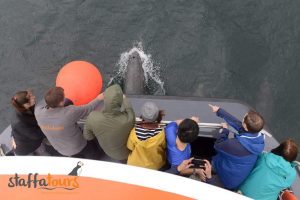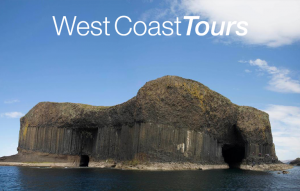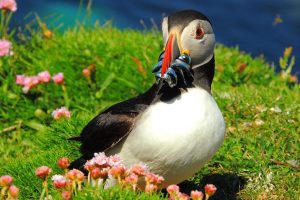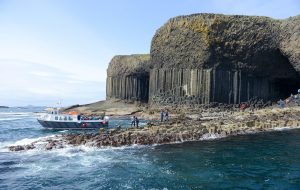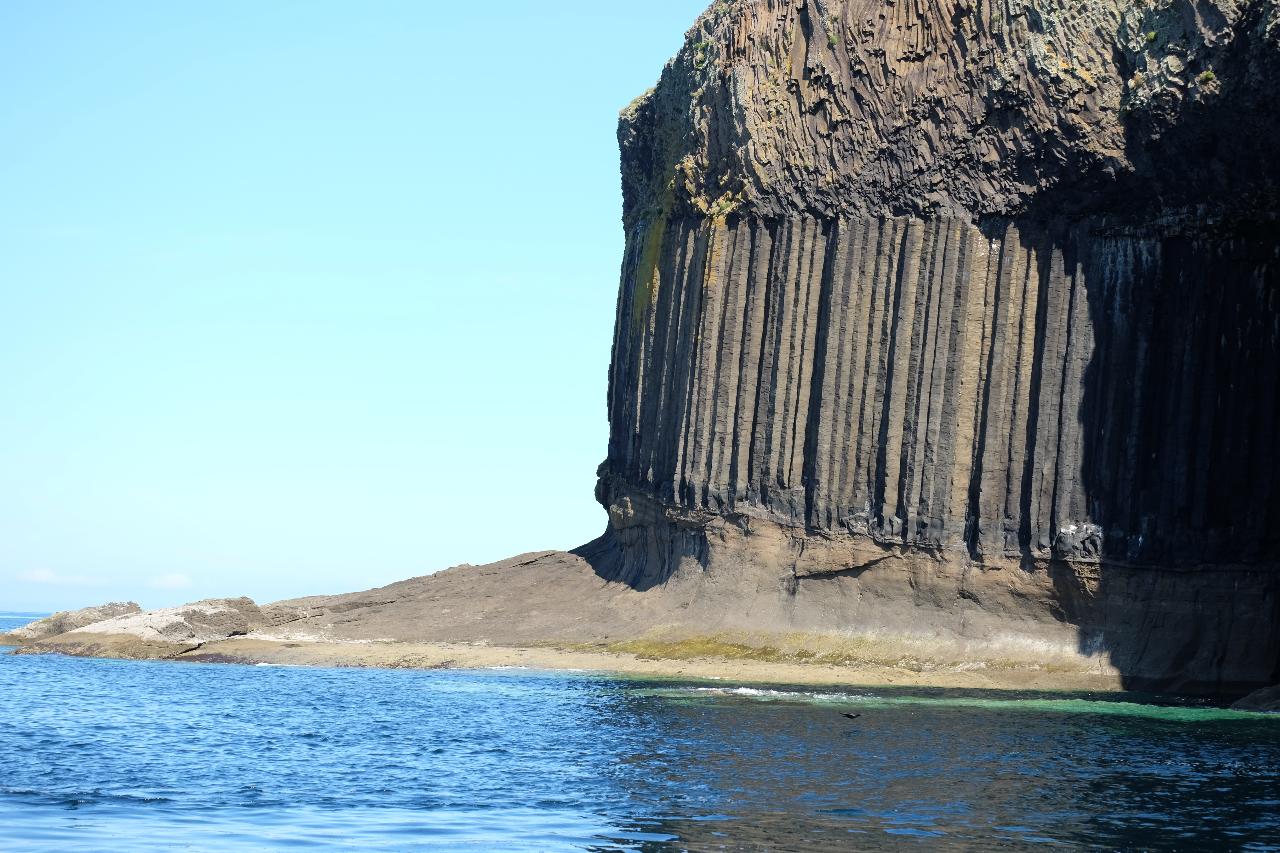Staffa & Fingals Cave Treshnish Wildlife Tour (Sails from August)
-
Departs:
Tobermory, Ardnamurchan
- 4 hours
£ 60
Staffa and Treshnish Isles Wildlife Tour from Fionnphort or Iona
-
Departs:
Iona, Fionnphort
- 6 hours
£ 85
Fingal’s cave is one of Staffa’s most astonishing features and has been billed as one of the world’s most spectacular caves. Formed by a Paleocene lava flow and sculpted from hexagonally jointed basalt pillars, this remarkable cave appears as though hand crafted, due to the unique structure of the rock column layers.
The basaltic pillars reach high and deep and are met by the sea surrounding the Island, resembling a sort of fictional fantasy – a ‘must see’ for all budding geologists!
Built Across Continents
Formed over 50 million years ago, Fingal’s Cave is located on the uninhabited island of Staffa and contributes to part of a vast network of sea caves. The cave was carved from the same lava flow that shaped the Giants Causeway, an area of about 40,000 interlocking basalt columns in Northern Ireland. Whilst the columns of layered rock were laid down at the same time, when a tilt occurred, pressure was applied above Fingal’s cave, forcing a crack to open up below which was further moulded from violent waves striking the island during storms over thousands of years ago. This crafted the incredible structure we see today.
The name ‘Fingal’ originally comes from an Irish myth, where the hero Fionn MacCumhaill’s (shortened to ‘Fingal’, meaning ‘white stranger’) and his faithful warriors migrated into Scotland from Ireland. The legend is that Fionn built the Giant’s Causeway, which is identical to Fingal’s Cave, after a challenge to fight. He soon became famous across Scotland, making his name the obvious choice.
In Art and Music
Renowned for its natural acoustics, eerie sounds produced by the waves, and naturally arched roof, the cave evokes a cathedral-like atmosphere. This has allowed for the cave to earn its Gaelic name ‘Uamh-Binn’, meaning ‘cave of melody’. The cave has attracted hundreds of thousands of visitors over the centuries, including Romantic composer Felix Mendelssohn who visited in 1829 and wrote his Hebrides overture in ode to the acoustics of the cave. The cave was also mentioned in one of Pink Floyd’s early songs, written for the film Zabriskie Point, but was not used. A poem written by 18th century Scots poet, James Macpherson, was also named after the cave.
Other famous visitors to the island include author Jules Verne, who used it in his book, Le Rayon vert (The Green Ray), and mentions it in the novels Journey to the Centre of the Earth and The Mysterious Island and poets William Wordsworth, John Keats and Alfred, Lord Tennyson. The cave was also immortalised in 1832 by artist J.M.W Turner in “Staffa Fingal’s Cave”, as well as being visited by Queen Victoria, Prince Albert and Dr. David Livingstone.
Sir Walter Scott described the cave as;
“one of the most extraordinary places I ever beheld. It exceeded, in my mind, every description I had heard of it… composed entirely of basaltic pillars as high as the roof of a cathedral, and running deep into the rock, eternally swept by a deep and swelling sea, and paved, as it were, with ruddy marble, it baffles all description.”
Visiting Today
This geological marvel is owned by the National Trust for Scotland as part of a national nature reserve. During our daily Staffa tours, the cave can be explored both from the water afar and on foot due to the fractured columns forming a walkway just above the water level.
The Wildlife
A variation of wildlife can be found surrounding Fingal’s cave and the isle of Staffa, including puffins, black-legged kittiwakes, common shags and gulls as well as marine wildlife such as basking sharks, dolphins, grey seals, minke and pilot whales. In the 1800’s three red deer were spotted on the island. These were then replaced by goats and then by a small herd of black cattle. The island was then used as summer grazing for sheep by crofters from Iona, until 1997 when all livestock was removed leading to a regeneration of the islands vegetation.
The impact of the cave on all those who enter it, and especially on those who do so alone, is powerful and lingering. To discover the magic of Fingal’s Cave and Staffa for yourself, book one of our boat tours today.
